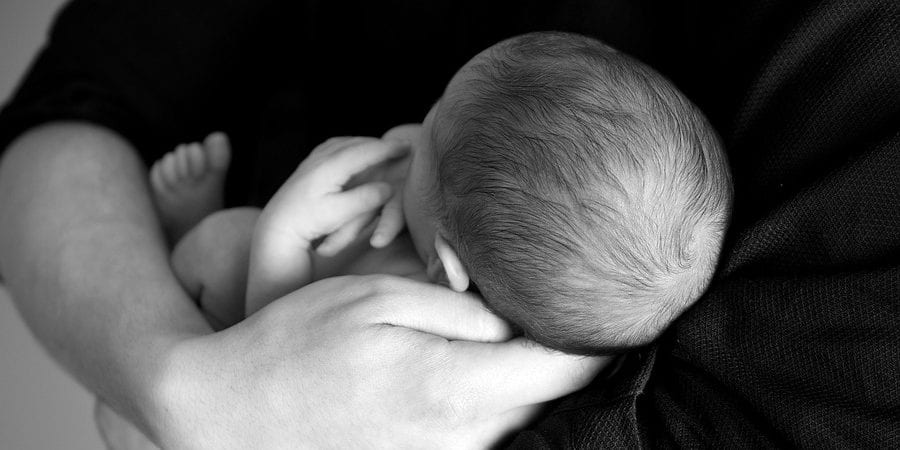
So, how long does it take for a baby’s head to shape? This blog post explores the causes of a misshapen head and how long it takes for a baby’s head shape to fully develop to ensure you have all the information you need when finding the right treatment for your baby.
What is a normal baby head shape?
Normocephaly (pronounced norm-oh-kef-alley) is the medical term for a baby’s head that has normal dimensions and proportions.
When looking down at the head, a normal head should resemble the shape of an egg with the back of the head being wider, becoming narrower as you reach the front of the head. A perfectly normal head width at the widest part is 78% of the length. There may be a slight difference diagonally and any diagonal difference below 6mm is considered to be within the normal range.
What causes a misshapen head?
There are 29 separate bones in a human head and the majority of these are in the face and supporting the brain. In an infant, the top of the skull (called the cranial vault) has five separate bones which have flexible fibrous sutures holding them together. In between the bones, there are fontanelles (commonly called soft spots) and the two latest ones to close are at the front and back top centre of the head. The sutures and soft spots allow a baby’s skull to flex as the head passes through the narrow birth canal. These structures allow the skull to expand and adapt to the rapid brain growth your baby experiences in infancy.
At birth, your baby’s head shape may appear pointy or cone-shaped, this is due to the amount of time spent squeezing through the birth canal and a result of a longer delivery. Cone shapes tend to round out after a few days as the birth trauma settles.
However, during the first few months of a baby’s life, the skull can develop a flattening if your baby’s head is continually lying in one position on a mattress, in a carrycot, car seats or strollers. If your baby has a tendency to spend a lot of time with the head in one position in early infancy, flat head syndrome may develop. This will be most noticeable when looking at your baby’s head from above. Looking down on the top of the head, you may notice that one side of the head may appear flatter than the other side or it may look very wide.
If you have noticed that your friend or loved one’s baby has a misshapen head and are worried about how to approach the subject without causing upset, our recent blog post explores some of the best ways to tell someone their baby has a misshapen head.

When will my baby’s head round out and fully develop?
Your baby’s head shape has fully developed when its cranial sutures have fully closed. So all through childhood the skeleton is developing and remains flexible. In the head, the soft spots start to come together and the fontanelle at the back of the head closes at about four months, with the frontal fontanelle closing between 9 to 18 months. Remember though, even though the soft spots have closed, they still remain flexible and will do all through childhood to allow the head and face to grow and remodel.
If you are concerned that your baby has a flat head, finding the right treatment as early as possible is important. One of the most common questions our clinical orthotists is “how old is too old for flat head syndrome treatment?”
We offer to start helmet treatment up to the age of 14 months and after this point, we will not consider treating a baby as their skull has begun to harden and the growth rate of the head shape slows dramatically. This means that we cannot use your baby’s natural skull growth to bring about correction and the treatment becomes much less effective. The best age for flat head syndrome treatment is between the ages of 4 to 7 months as the growth rate is still high and the structures of the skull are still pliable.
If you would like to find out more information about your baby’s head shape, our free severity assessment app is available on our website. This simple-to-use tool allows you to upload a photograph of your baby’s head shape and compare it with baby’s head shapes who have undergone treatment with us.
If your baby falls into the mild, moderate or severe category there are a number of flat head syndrome treatment options that we can offer. If you are concerned about your baby’s head shape, book a free pre-assessment with one of our experienced and professional clinical orthotists. This evaluation will determine the best course of treatment for your baby and we can offer expert advice and answer any questions you may have, including ‘when will my baby’s head round out?’.
If you would like to find out more about your baby’s head shape or would like to book no-obligation plagiocephaly evaluation, call our team on 0330 100 1800 or contact us.


